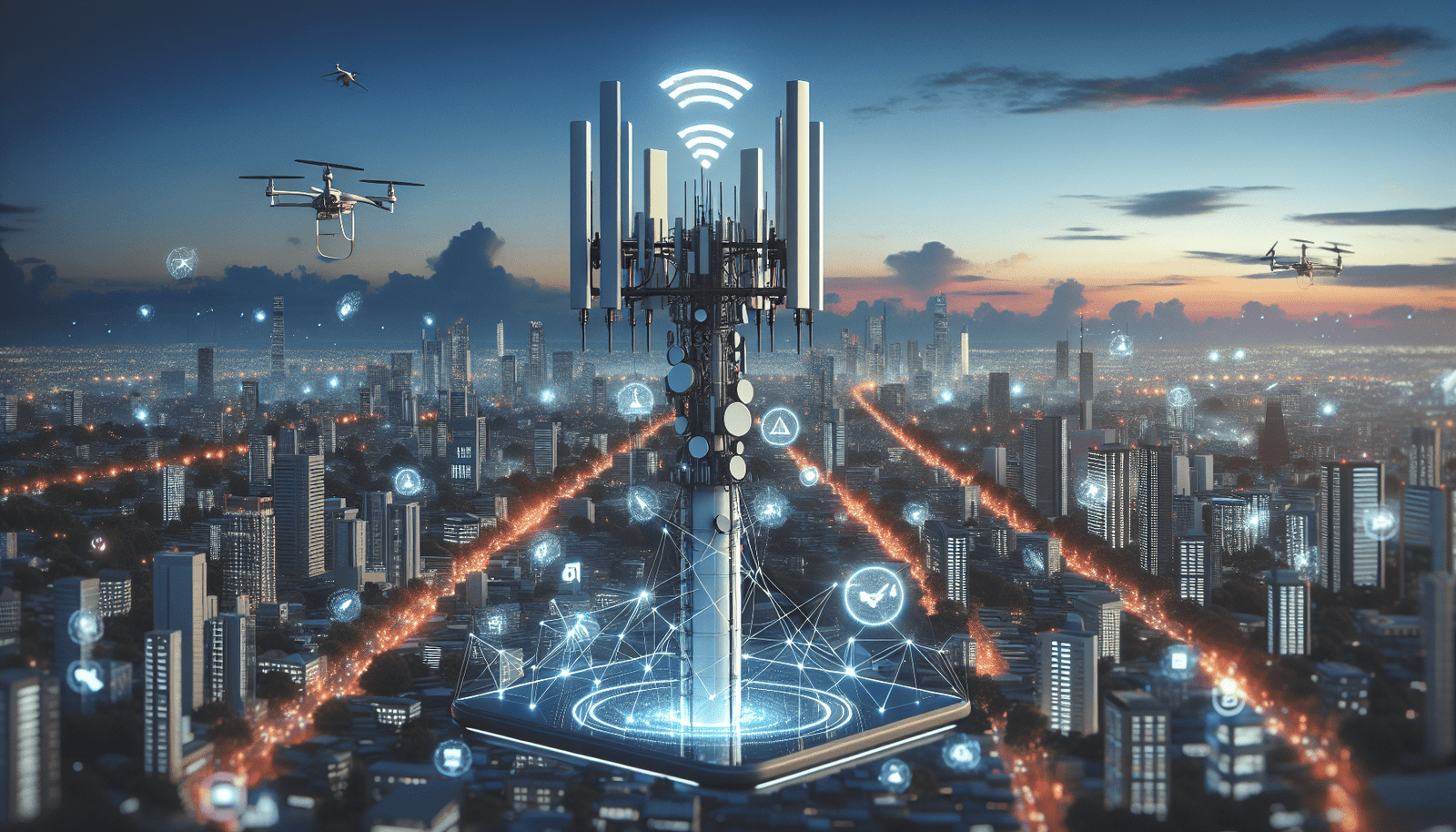Have you ever wondered how the advent of 5G technology might revolutionize the way we live, work, and connect with each other? It’s a fascinating topic that holds great promise for our society. Let me walk you through the future of 5G technology and its profound impact on various aspects of our daily lives.
Understanding 5G Technology
5G, which stands for the fifth generation of wireless technology, is more than just an upgrade from its predecessor, 4G. It promises faster speeds, reduced latency, and the ability to connect a greater number of devices simultaneously. This enhanced connectivity is pivotal as we find ourselves in an increasingly digital world.
What Makes 5G Different?
The primary difference between 5G and earlier generations, like 4G, lies in its capacity and speed. While 4G networks average download speeds of around 20 Mbps, 5G aims for a staggering 10 Gbps. This means I can download a full-length HD movie in mere seconds!
5G operates using different frequency bands, primarily the low-band, mid-band, and high-band (also known as mmWave), each having its unique benefits and challenges.
| Frequency Band | Speed | Coverage | Use Case |
|---|---|---|---|
| Low-band | Up to 100 Mbps | Wide | Rural areas, basic mobile services |
| Mid-band | Up to 1 Gbps | Moderate | Urban areas, enhanced streaming |
| High-band | Up to 10 Gbps | Limited | High-density environments, immersive experiences |
This table highlights how different frequency bands of 5G cater to various needs and environments, making it a versatile technology.
The Core Components of 5G Networks
To better understand 5G, it’s essential to know the core components that make up its infrastructure. These include:
- Small Cells: Small, low-power cell stations that help expand coverage, especially in urban areas where high demand exists.
- Massive MIMO: Stands for multiple-input multiple-output technology, which utilizes numerous antennas to increase capacity and performance.
- Beamforming: A technique that directs a wireless signal straight to a device rather than spreading it in all directions, enhancing efficiency.
By combining these components, 5G networks can deliver remarkable speed and reliability.
The Societal Impact of 5G Technology
Ultimately, the implementation of 5G technology will usher in significant changes across various societal sectors. Let’s take a closer look at some of these areas.
Transforming Communication
The way I communicate is already evolving thanks to technology, but 5G will take this transformation to another level. With faster speeds and more reliable connections, I can enjoy crystal-clear video calls without lag, enabling more personal and effective communication.
Enhanced Video Conferencing
Many of us have adapted to remote work, and video conferencing has become commonplace. With 5G, I can expect higher-quality video and audio, making interactions feel more natural. Remember those awkward moments when someone’s face would freeze mid-sentence? With 5G, that could be a thing of the past!
Revolutionizing Entertainment
Entertainment is another area where 5G technology will have a significant impact. Streaming services, online gaming, and virtual reality experiences will be transformed as the speed and reliability of connections improve.
Movies and Gaming on the Go
Imagine watching a full-length movie in high definition while on the bus or playing a graphics-heavy game on my smartphone without interruptions. 5G unlocks this potential, making it easier for me to access high-quality content from anywhere.
Advancements in Healthcare
Healthcare is one of the sectors that might benefit the most from 5G technology. With its low latency and high-speed capabilities, it will enable innovations that can save lives.
Telemedicine
As someone who values health and well-being, I can appreciate how telemedicine has become vital, especially during the pandemic. 5G technology will enhance remote consultations, allowing healthcare professionals to connect with patients seamlessly, even providing real-time diagnostics through advanced tools.
Remote Surgeries
Even more exciting is the prospect of remote surgeries. Doctors will have access to incredibly detailed real-time data, enabling complex procedures to be performed from miles away. This could be life-changing for those in remote areas where specialized medical services are scarce.
Impacting Education
Education, too, will undergo a notable transformation owing to 5G. With better connectivity, I can access vast amounts of online resources and engage in more interactive learning experiences.
Enhanced Remote Learning
During my time in school, learning was primarily conducted in-person. However, 5G will facilitate more immersive online learning environments. I can attend virtual classes that offer interactive features like 3D simulations or augmented reality experiences, making learning more engaging and effective.
Bridging the Digital Divide
One of the hopeful aspects of 5G technology is its potential to bridge the digital divide. With more robust internet connectivity in rural and underserved areas, I can access the same educational resources as those in urban environments, equalizing opportunities for learning.
Smart Cities and Infrastructure
As cities grow and technology becomes more integrated into our lives, 5G stands at the forefront of developing smart cities. These urban areas leverage technology for enhanced efficiency, safety, and quality of life.
Connected Vehicles
I can envision a future where my car communicates with traffic lights and other vehicles to optimize my commute. 5G technology will enable the necessary infrastructure to support connected and autonomous vehicles, reducing traffic accidents and enhancing road safety.
Smart Utilities
Smart meters for electricity, water, and gas will be able to send real-time data over 5G networks, allowing for better resource management. I’ll be able to monitor my consumption and make informed decisions to conserve resources.
| Smart City Component | Benefit |
|---|---|
| Traffic Management | Reduced congestion and enhanced public safety |
| Environmental Monitoring | Real-time data for pollution control |
| Public Safety | Improved emergency response times |
This table outlines some benefits of smart city initiatives powered by 5G technology.
Challenges and Concerns
Despite the many benefits, implementing 5G technology is not without its challenges. As I think about the future, some concerns come to mind.
Health Concerns
One of the primary concerns surrounding 5G technology relates to its potential health effects. Ionizing radiation from cell towers can make me uneasy, although much research remains inconclusive. Regulatory agencies continue to assess the safety of 5G frequencies.
Infrastructure Costs
Building the necessary infrastructure to support 5G will require significant investment from telecommunication companies and governments alike. I worry that these costs may delay the roll-out and, ultimately, the benefits, especially in less affluent regions.
Cybersecurity Risks
As our reliance on connected devices grows, so does the risk of cyberattacks. With 5G enabling more devices with vast amounts of data, I have to consider how effectively cybersecurity measures can keep pace with these advancements. Ensuring robust security frameworks will be crucial to protect users like me.
Looking Toward the Future
What does the future look like with 5G technology? While I am excited about the possibilities, I understand that the impact will unfold over time.
A World of Possibilities
5G technology has the potential to create a world where everything is interconnected. From smart homes making everyday tasks easier to businesses automating their operations, I can envision a future filled with innovation and convenience.
Collaboration Across Sectors
For 5G technology to reach its full potential, collaboration between governments, industries, and academia will be essential. As regulations evolve and infrastructure expands, I hope to see partnerships that foster advancements and ensure equitable access.
Conclusion
In contemplating the impact of 5G technology on society, I find myself filled with excitement and optimism. The transformations it promises across communication, entertainment, healthcare, education, and urban infrastructure could significantly enhance my life and those of countless others.
While challenges and concerns exist, addressing them proactively will be crucial for a successful implementation. I look forward to a future where 5G technology fulfills its potential, leading us into an era of unparalleled connectivity and innovation. How do you feel about the arrival of 5G? The possibilities are endless, and I can’t wait to see where it takes us!






